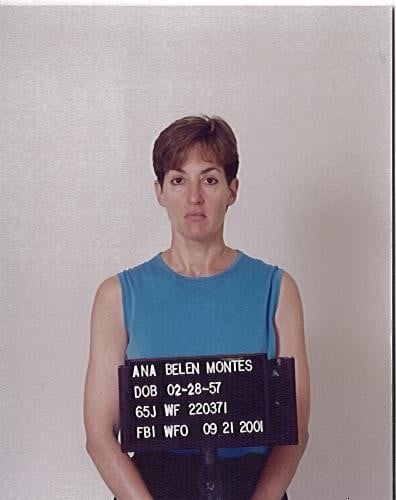In rescinding an order today that prevented women from serving in ground combat roles, Defense Secretary Leon Panetta, who in 2011 presided over the repeal of a ban on openly gay service members, solidified a legacy as one of the most significant reformers of the U.S. military. Taken together, those two policies mark perhaps the broadest and most significant change in the social structure of the military since the advent of the all-volunteer force, in 1973, and prior to that the deactivation of the last all black unit in the Army, in 1954, which completed racial integration of the military.
American women have been serving for more than a century in war zones, frequently in support positions such as nursing or transportation. (Nearly half a million served during World War II.) And women have been allowed to fly in combat since the 1990s. But a 1994 rule prohibited women from assignment to units engaged in direct ground combat.
Panetta rescinded that order today. Now, more than 200,000 women, approximately 15 percent of the overall force, will be eligible for frontline battle positions, including serving in the infantry, in tanks, and special operations forces, or any position in which they are likely to encounter an enemy on the ground and take fire. The military services must begin to open positions that were previously closed to women or provide a reason why they should continue to be restricted only to men.
For Panetta, who is preparing to step down as the nation’s 23rd Defense Secretary, lifting the ban caps a storied Washington career. He has served both as an elected member of Congress and also in a variety of appointed, senior positions in the executive branch. He has been known as a shrewd manager, an expert navigator of Washington politics and bureaucracy. In his prior position as director of the CIA, he succeeded largely by being a staunch defender of his agency to the public and on Capitol Hill, even amid the widening controversy over clandestine use of lethal force. (Today, the United Nations announced an investigation into the use of drone strikes, which has been the CIA’s primary means of attacking terrorist groups overseas.)
In lifting the 1994 order, Panetta was joined by Gen. Martin Dempsey, the Chairman of the Joint Chiefs of Staff, who graduated from the U.S. Military Academy in 1974, two years before it admitted its first female cadets.
Both Panetta and Dempsey left little doubt that they believe they’re on the right side of an historically contentious issue, one that each weighed in light of the sacrifice and service of women during 10 years of war.
“The fact is [women] have become an integral part of our ability to perform our mission,” Panetta said, noting that 152 women have died fighting in Iraq and Afghanistan. “The next greatest generation will be one of men and women who fight and die to protect this nation.”
Dempsey remarked that he’d seen a TV news ticker announce that women were about to be allowed to serve in combat. “We’re way beyond that,” he said. “Women are serving in combat and have been.”
But both men acknowledged that the full integration of women won’t be accomplisedh with the stroke of a pen. The process will occur “expeditiously,” Panetta said. But it will likely take years. Each branch of service will have until 2016 to put the new policy in place and argue for any exemptions to the new rule.
The services must assign women to positions on a gender-neutral basis. There can be no lower set of requirements for women compared to men, including physical requirements. Panetta insisted that the military would not lower its standards. “Let me be clear; we’re not talking about reducing the qualifications for the job,” he said. “Not everyone is going to be able to be a combat solider. But everyone is entitled to a chance.”
Dempsey explained, “The burden used to be that we said why should a woman serve in a particular specialty. Now it’s why shouldn’t a woman be allowed to serve in a particular speciality.”
Lifting the ban was perhaps inevitable in light of women’s combat service over the past decade. While they have been restricted from frontline ground positions, the nature of insurgent warfare has blurred the definition of combat. In asymmetrical wars with few constant battle lines, servicewomen who technically aren’t supposed to engage the enemy have nevertheless found themselves in harm’s way.
According to figures compiled by the Congressional Research Service, in 10 years of fighting in Iraq and Afghanistan more than 800 women have been wounded. As of last February, more than 20,000 women have served in the two countries. And on several occasions, women have been recognized for heroism. Two have earned the Silver Star.
But since the services have the option of carving out certain exceptions in particular jobs, the policy “will likely not be a completely open door,” according to an analysis from private security firm Stratfor. Even if women are allowed to serve in combat units, they might be restricted to duties at headquarters, the analysis noted. It also raised concerns about how the inclusion of women will be accomplished in light of recent cases of sexual harassment in mixed gender units. “This policy will likely exacerbate the problem,” the analysis concludes.
But Dempsey said that lifting the ban might alleviate the problem, arguing that professional inequality between men and women makes harassment more likely. “I believe it’s because we’ve had separate classes of personnel, at some level,” he said. The disparity “establishes a psychology that in some cases led to that environment. I happen to believe that the more we can treat people equally the more likely they are to treat each other equally.”
Dempsey also rejected the idea that a need for personal privacy would make it difficult for men and women to live and work together. In the first Gulf War (Operation Desert Storm) he said forces were “essentially nomadic,” moving around and camping in the desert. Panetta added that women also serve alongside men in the close quarters of Navy submarines.
Those who oppose Panetta’s decision said the wholesale dismantling of the 1994 ban is too broad and too swift. “Because that policy has worked so well for so long, I am concerned about the potential impacts of completely ending [it],” said Sen. James Inhofe (R-OK), the ranking member of the Senate Armed Services Committee. As the committee engages in oversight, “I suspect there will be cases where legislation becomes necessary,” he added.
One retired flag officer echoed concerns that the Defense Department is bowing to cultural pressures, and reiterated that the military is already struggling with instances of harassment among mixed-gender units. “I don’t think we should use our military for social engineering,” said retired Admiral John Poindexter, a 1958 graduate of the Naval Academy who served in several command positions and became the National Security Adviser to Ronald Reagan. “Commanders have enough problems as it is.”
In a statement, Poindexter’s Annapolis classmate, Sen. John McCain, said he supported Panetta’s decision, adding that it is “critical that we maintain the same high standards that have made the American military the most feared and admired fighting force in the world–particularly the rigorous physical standards for our elite special forces units.”
The proportion of women in military service has risen over the decades. By 1998, 20 percent of enlisted recruits were female. “It was time to make this decision based on the performance and the record of women in combat,” said Tanya Biank, the author of the forthcoming book, Undaunted: The Real Story of America’s Servicewomen in Today’s Military. “You can’t erase the impact that servicewomen have had in Iraq and Afghanistan over the last decade.”









